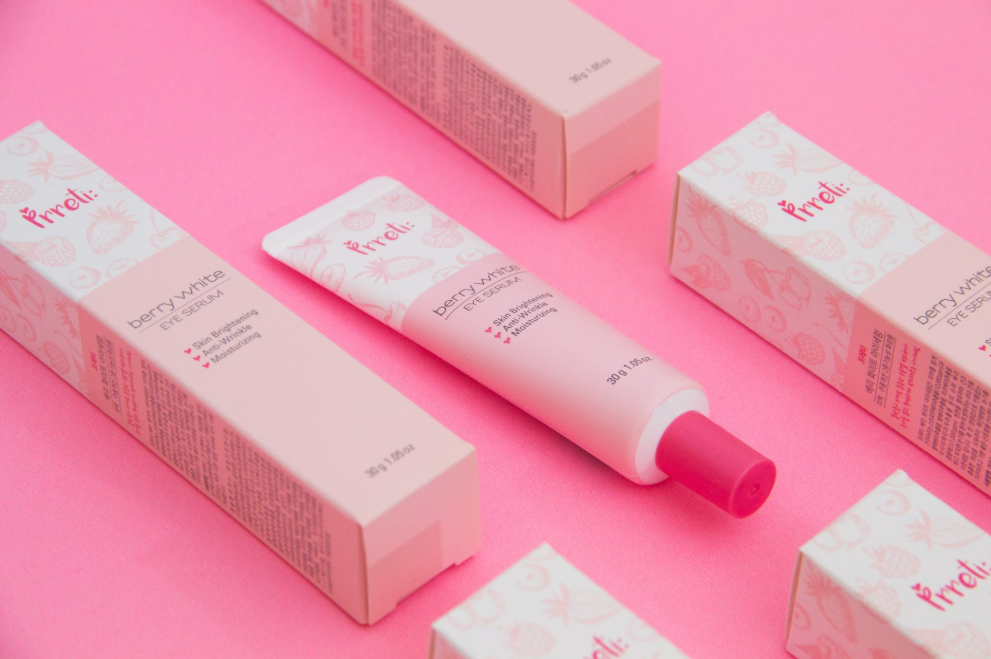
The environmental friendliness of beauty product packaging is a big challenge for the industry and part of that is down to its poor potential for recycling.
Brand design consultant Lewis Moberly production director Mark Tosey explains that this is, in part, due to designs used in beauty packaging.
Tosey told Packaging Gateway: “As beauty packaging is often designed and dressed to be a premium or luxury product, some of the decorative and print processes can also significantly contribute to the barriers of recycling.
“There are also specific difficulties with recycling black plastics, a colour often used in cosmetics, which has received much attention recently.”
Black plastic packaging is difficult to recycle as it is coloured using carbon black pigments, which means that the plastic cannot be sorted using Near Infrared (NIR) technology and often ends up as residue.
As well as black plastic, a lot of beauty products are small and often end up being sent to landfill even when the packaging is recyclable. This is because materials at recycling facilities go through a piece of equipment called a trommel, which is designed to remove small contaminants from a recycling stream.

US Tariffs are shifting - will you react or anticipate?
Don’t let policy changes catch you off guard. Stay proactive with real-time data and expert analysis.
By GlobalDataBeauty product packaging also mixes plastic with other materials, making recycling an issue as the materials cannot be easily separated, and a lot of products use unnecessary packaging for branding purposes.
Waste management expert Skips and Bins director Scott Hawthorne told Packaging Gateway: “The problem with beauty packaging, as with all packaging, is that there are too many different materials used to package the products. Invariably, there will be cardboard packaging, which is readily recyclable, but inserts are usually a combination of one, two or even three different types of plastic, and sometimes foil.”
What can the industry do?
What can be done about these recycling problems that the beauty packaging industry faces? Aluminium Packaging Recycling Organisation (ALUPRO) executive director Rick Hindley thinks that switching to aluminium as an alternative to plastic could be one way for the industry to become more environmentally friendly.
Hindley told Packaging Gateway: “We are getting an increasing amount of companies wanting to move from plastic to aluminium. I’ve seen all sorts of new and wonderful packaging shapes coming from this. Aluminium is infinitely recyclable, so as long as consumer puts it into their recycling system, it can be recycled back into a new aluminium product.
“We’ve seen a lipstick producer looking to move to aluminium. We’ve had companies looking to move things like soap into aluminium containers. There’s a huge variety of different products that can be put into aluminium. The sky’s the limit.”
Hindley added that aluminium has a very high scrap value so will not end up being littered or misplaced as residue. He said aluminium is usually put through sorting equipment twice at recycling facilities because of its high value, which means that smaller items rarely disappear in the process.
Hindley added: “In 2018, 95% of the packaging collected for recycling in the UK was recycled either within the UK or Europe. It doesn’t get exported to countries that run the risk of not being recycled.”
Last month, scientists developed biodegradable packaging to help cosmetic companies move away from plastics. Yesterday, results from a survey revealed that 98% of UK MPs from Westminster parties think that switching to compostable materials could be part of the solution.
Other businesses think companies should focus on repurposing plastic instead of trying to eliminate it or switch to other materials.
Eco-conscious grooming business Men-U founder Graham Fish told Packaging Gateway: “One of the problems in the cosmetic industry is that there are so many different types of plastics used. Part of the problem is that if there is no regulation set, nothing will change. There needs to be government regulation because there’s a lot of well-intentioned people out there but so many are confused.
“The only thing experts seem to agree on is plastic reduction. Plastic has a lot of merit though. We need to find a way to use this mountain of plastic and, if there are ways that it could be used, we should be incentivising people to go down that path.”
Tosey told Packaging Gateway: “There is, of course, a heavy reliance on the use of plastics with beauty packaging, but rather than seeing plastic itself as the pariah of the packaging world, it is perhaps more constructive to focus on ways to enable plastics, particularly single-use items, to be re-used or recycled.”



